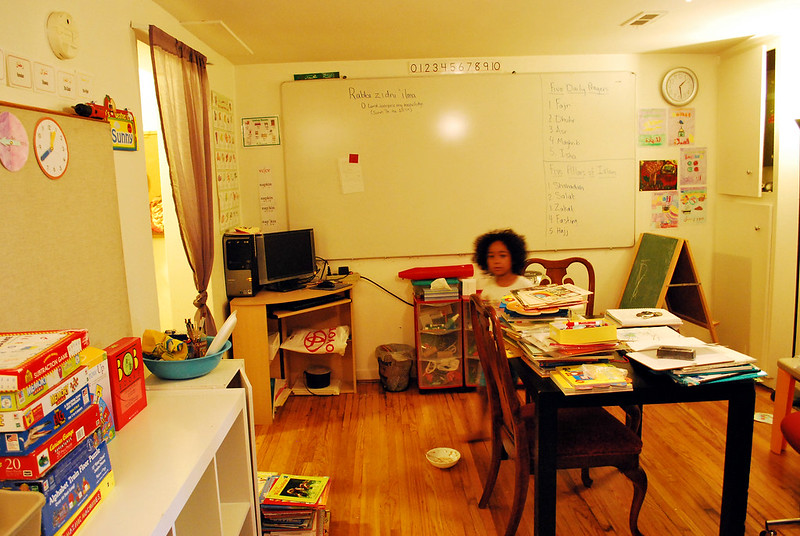
Like a growing number of districts around the country, Oakland Unified School District, where my son, Zef, is a rising kindergartner, recently announced it will start the school year with all students doing distance learning due to the ongoing COVID-19 pandemic.
Districts across the country are in a truly terrible position right now, and it’s not their fault—they didn’t ask for a world of polarized mask wearing, and desperately need Congress to pass another stimulus bill. Our teachers didn’t sign up to die so we can “restart the economy.” My mother is a 67-year-old third-grade teacher, still three years away from her full pension, and I’m praying her district doesn’t send her back into the classroom before the science says it’s safe.
But still, I’m struggling with how to make this work for my family. Every parent and student in the country now knows that school via Zoom doesn’t work for the vast majority of students—whether because they are squirmy kindergartners, lack devices or reliable internet, have too many distractions at home, or struggle without in-person social connections with their peers.
Those parents still lucky enough to have their jobs desperately need a solution for childcare. Mirroring gender inequities that existed long before the pandemic, this burden falls disproportionately on women.
Without a workable solution coming from our school districts, parents are—completely understandably—actively working to solve these problems for their own families.
But leaving the creation of school and childcare systems to the last-minute improvisation of individual families is a recipe for the most inequitable year of schooling the U.S. has seen in living memory. And that’s saying something, given the crisis of education equity that plagues our country in a normal school year.
A month ago, an unprecedented number of white families joined families of color at youth-led Black Lives Matter marches.
This month, parents with means, disproportionately white, are setting up co-op homeschools with three other families and paying a teacher to lead them. Parents without means—disproportionately Black and brown—are asking their older kid to babysit the younger ones while they make Instacart deliveries to keep a roof over their heads.
So while I understand that districts are struggling through a crisis they didn’t create, we still desperately need them to step up with creative, out-of-the-box solutions that work for all kids and families in this unprecedented time. It’s critical we don’t allow this pandemic to worsen the racial disparities already endemic to our education system.
Three ideas for districts to meet the moment:
1. Get much more involved in the creation of pods and microschools.
This is happening very actively without their involvement right now.
I’d love it if our district surveyed me about my COVID risk tolerance, and then assigned me to a pod to coordinate with around co-childcare plans, making equity and diversity within and among pods a key consideration in doing so. “Include these three families” is so much more doable than “make sure no one is excluded.”
Parents just won’t be able to do the latter without major help from the district.
2. Once allowed to reopen in-person, hold school outdoors.
This could take place in parks or under tents on the playground. From what we know about the virus, being outside is so much safer. The relative lack of space constraints when school is outside open up the possibility of holding in-person school for every kid every day, likely with help from paraprofessionals and/or parent volunteers to provide extra supervision. Done right, this can even be an opportunity to innovate new child-led exploratory learning models, inspired by the Forest School models popping up around the country.
3. Get creative about facilities to spread out inside.
Making outdoor school impossible is, of course, contingent on weather, available green spaces or educational needs.
Lots of smart people are also suggesting we leave high schools closed and use those facilities for elementary students, who are least equipped for distance learning or staying home alone. Even beyond that, our communities are filled with unused indoor spaces right now that are ripe for creative repurposing.
Making these solutions work will take an openness to making exceptions and revising rules that weren’t written for the moment we’re in, and no solution will be perfect—but we desperately need to push our thinking in this moment further, for the sake of all our kids and families.
The coronavirus pandemic and the response by federal, state and local authorities is fast-moving. During this time, Ms. is keeping a focus on aspects of the crisis—especially as it impacts women and their families—often not reported by mainstream media. If you found this article helpful, please consider supporting our independent reporting and truth-telling for as little as $5 per month.





